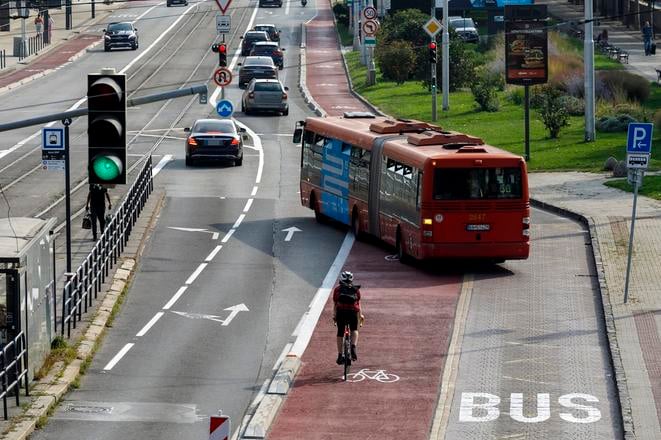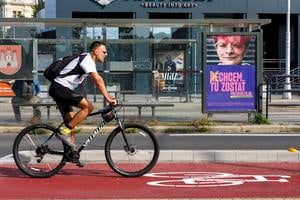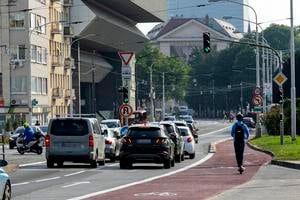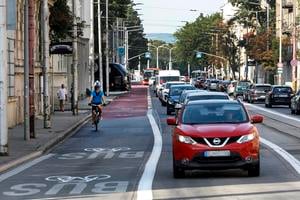The new organisation of transport, in effect since September around the Danube embankment in Bratislava, has resulted in opposing reactions.
The two lanes going in both directions made way for generous, three-metre-wide cycling paths, separated from the road by concrete curbs. In addition to safety, cyclists are assured of greater comfort on the section from the Most SNP bridge to Šafárikovo Námestie square. The path is less than a kilometre long.
According to Dan Kollár, head of the Cyklokoalícia (the Cycling Coalition) civic association, cyclists have been waiting for a change on the embankment for years.
"I see it as a pleasant change that will contribute to the humanisation of the embankment. Even without cycling paths, so many driving lanes were certainly not necessary. However, the way the public was informed about the change was lacking, some perhaps given the impression that the city does not know what it was doing. Communication about the work on the project started late," he opines.
"This is a sensible step forward in building cycling infrastructure and a more sustainable mode of transport in the city, and a great example of how it should be done. In other words, taking space from cars and giving it back to pedestrians, cyclists and public transport," says Šimon Krošlák, the owner of the Švihaj Šop cycling store.
Marína Fraňová now finds it easier to ride along the embankment. She likes that there are fewer cars, which makes her feel safer. But she is not ready to ride through the city just yet.
"I work in the city centre and I would like to commute by bicycle, but from the Trnavské Mýto locality there are sections I would have to ride along cars, which I'm afraid of. But I would not have any problems with this particular path," she said.
Drivers are lambasting the change. The section can be bypassed along Einsteinova Street in Petržalka.
Drivers are getting used to new rules
Sometimes cars also drive on the red cycling paths, but according to Kollár, this does not happen often.




